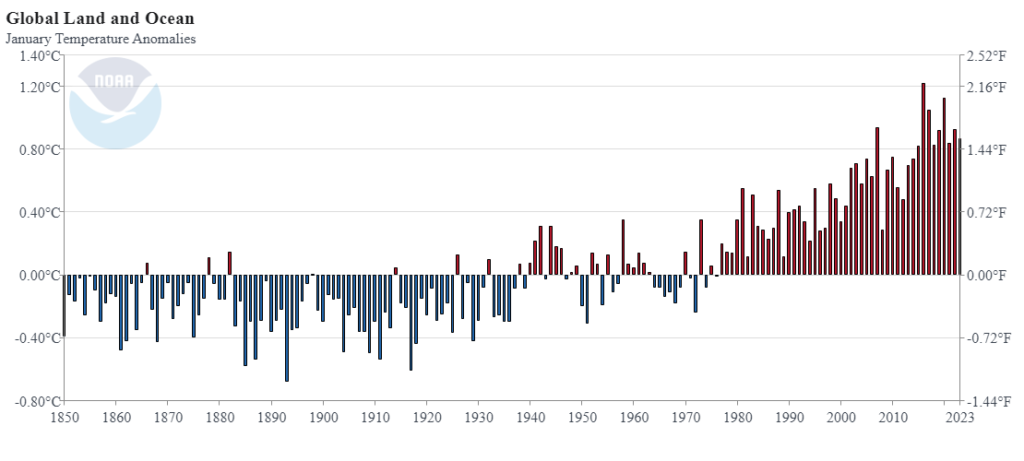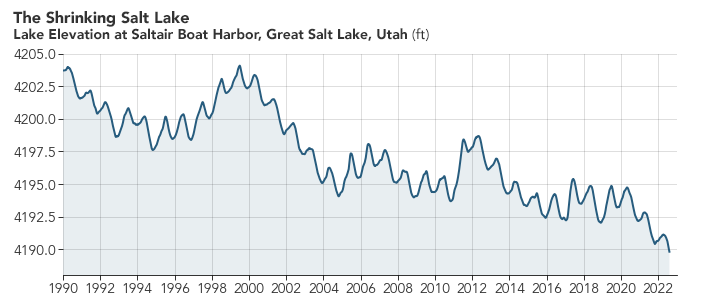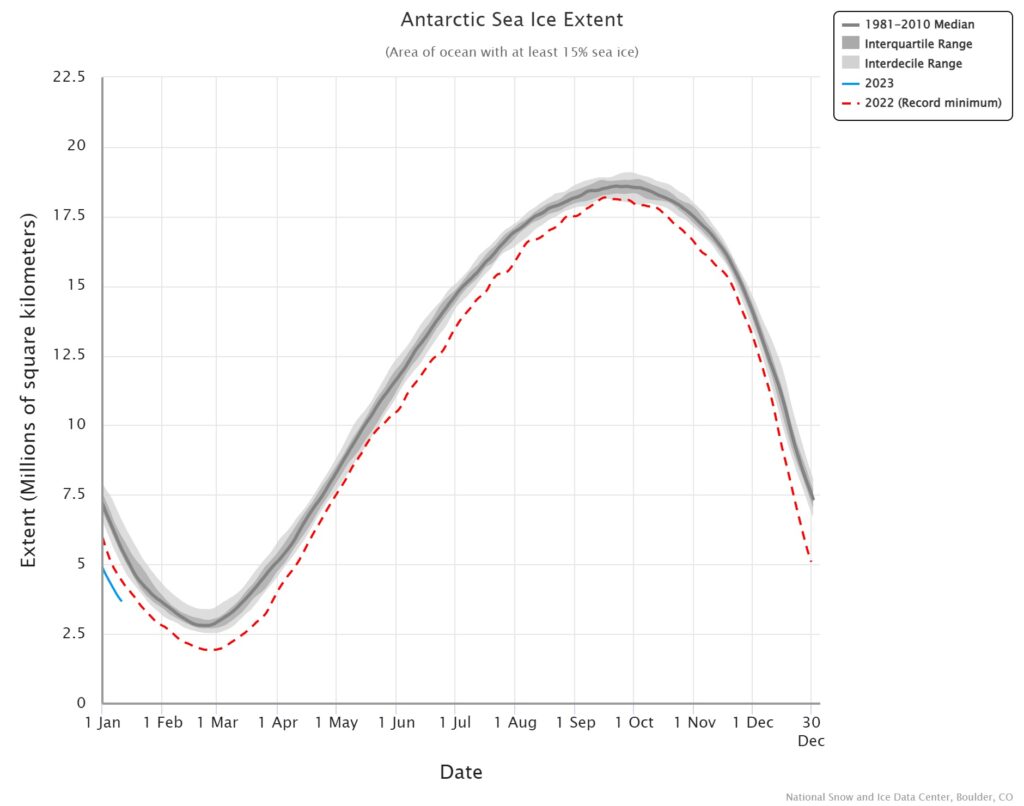 From NOAA’s January 2023 Global Climate Report:
From NOAA’s January 2023 Global Climate Report:
January 2023 was the seventh-warmest January for the globe in NOAA’s 174-year record. The January global surface temperature was 1.57°F (0.87°C) above the 20th-century average of 53.6°F (12.0°C). January 2023 marked the 47th consecutive January and the 527th consecutive month with global temperatures, at least nominally, above the 20th-century average.
A few highlights:
This January, Europe had an unusually mild month that set a record for the warmest January on record. Europe’s surface temperature exceeded the previous January record set in 2007 by 0.16°C (0.28°F).
The Hawaiian region tied a 1941 record for its warmest January on record.
The contiguous U.S. had its sixth-warmest January on record. Seven states in the northeastern U.S.—New Hampshire, Vermont, Massachusetts, Rhode Island, Connecticut, New Jersey and Maine—had their warmest January on record.
Data is available at the top of the page.








